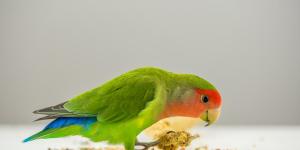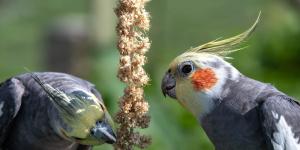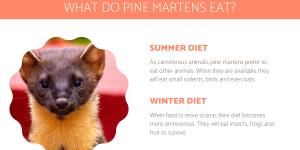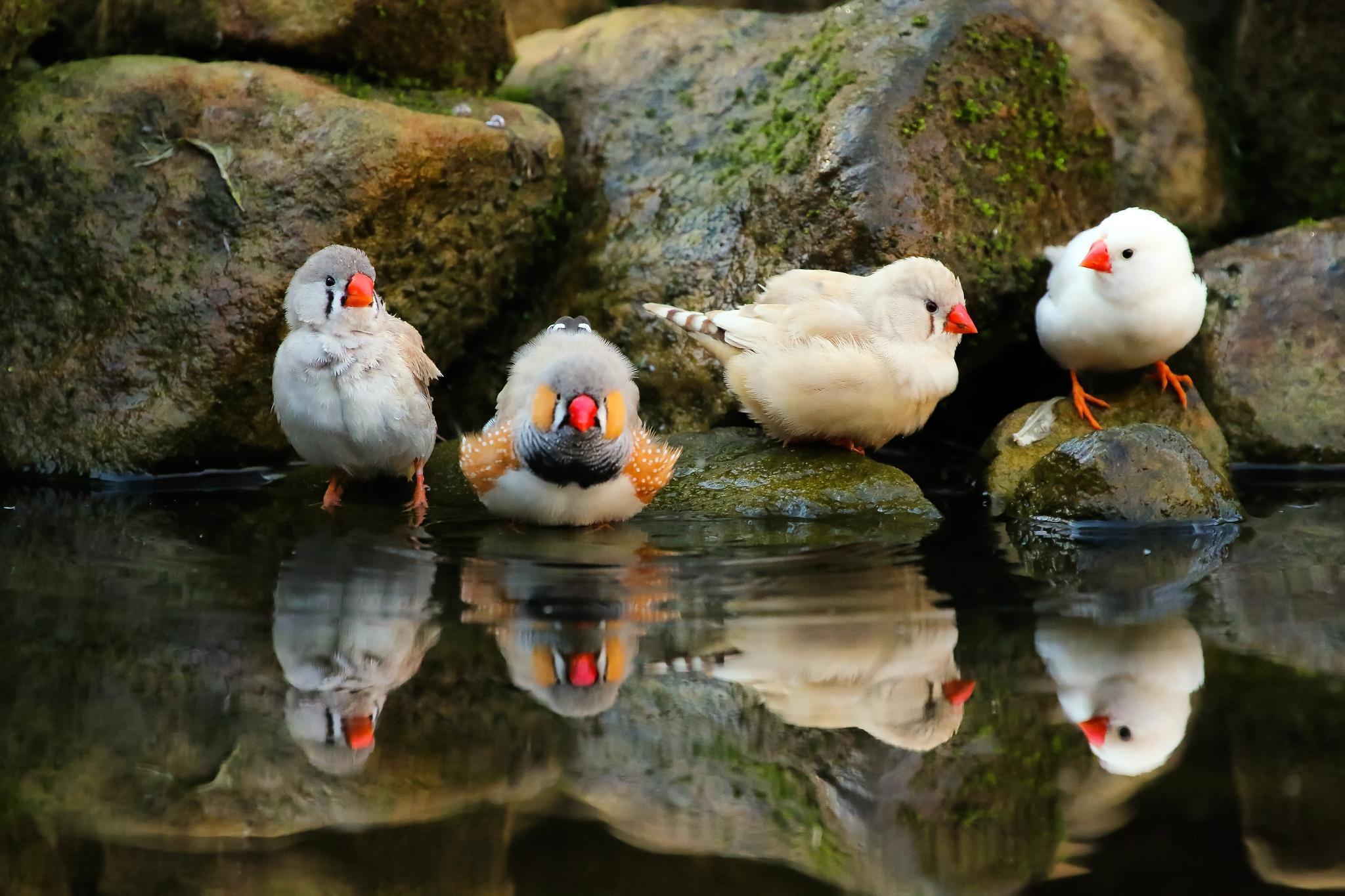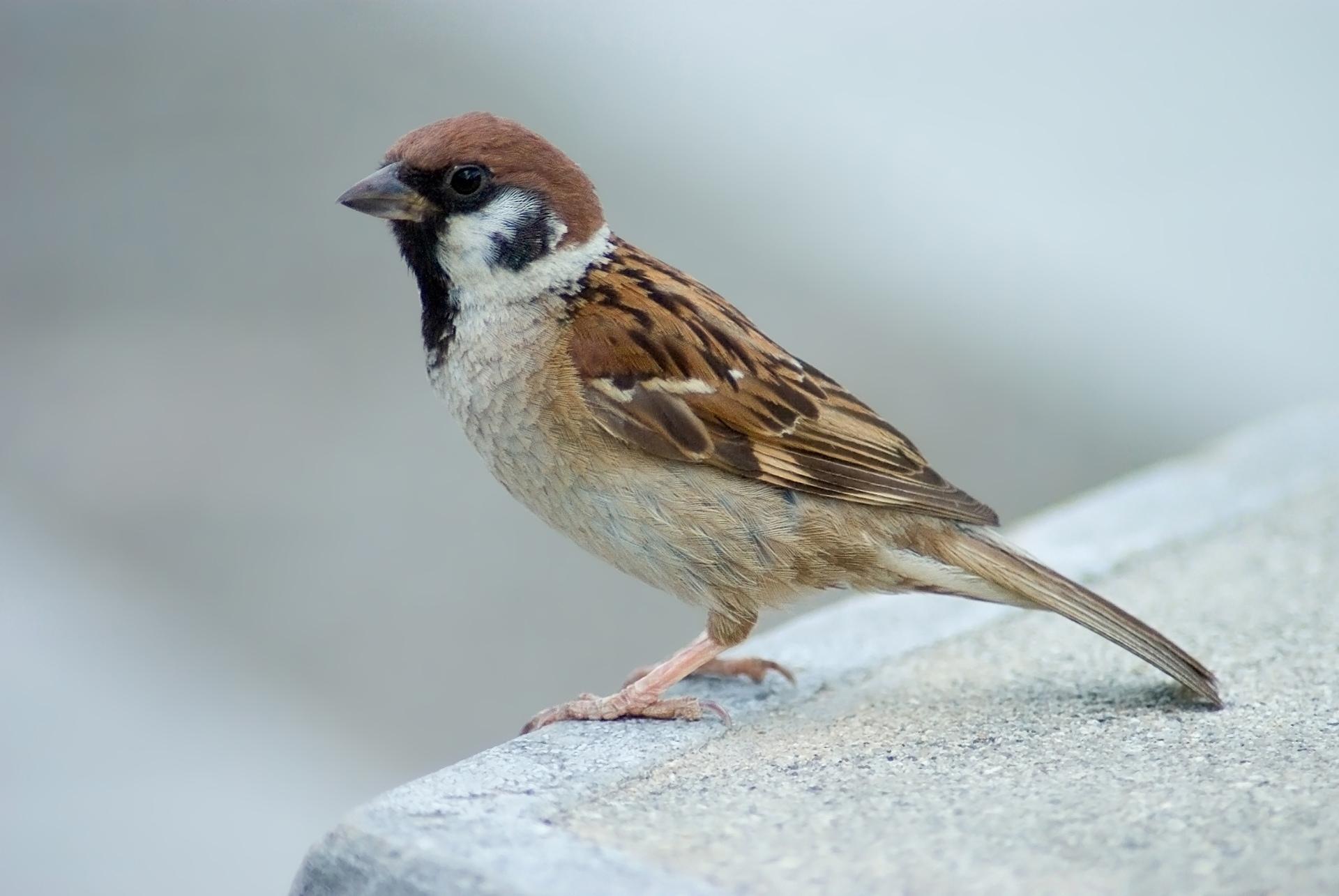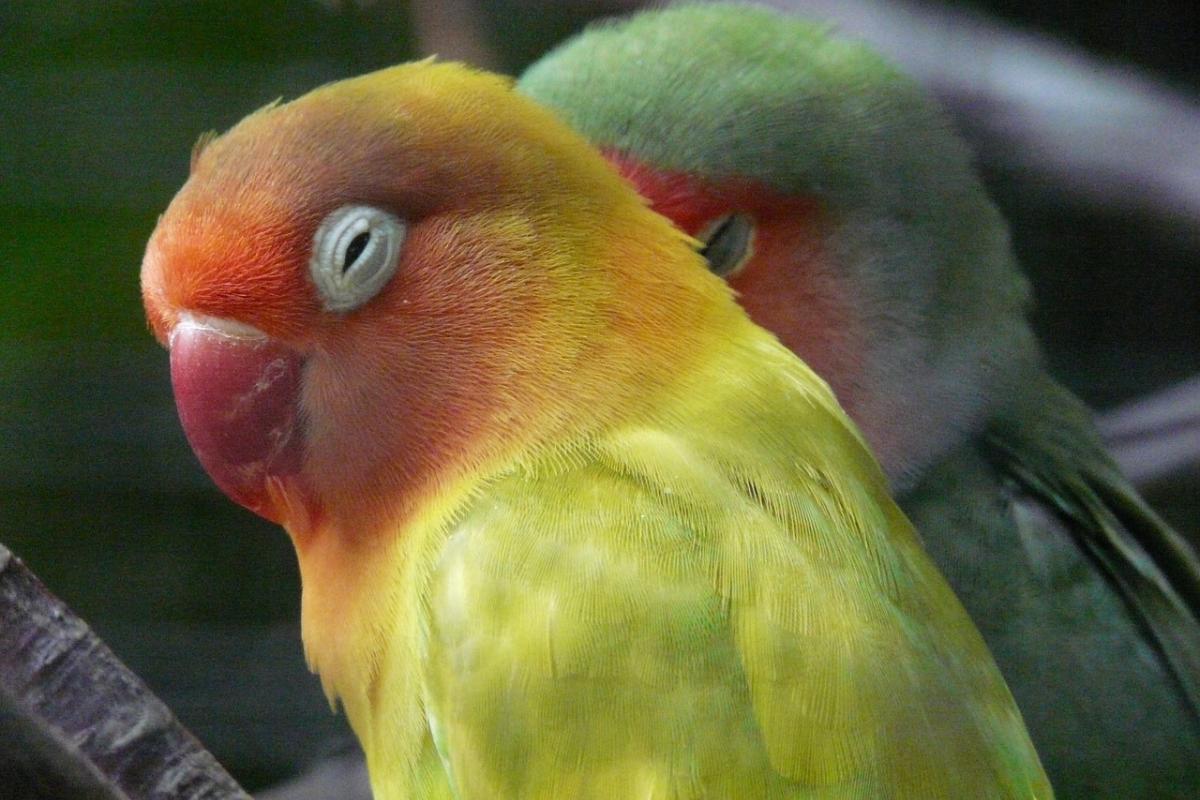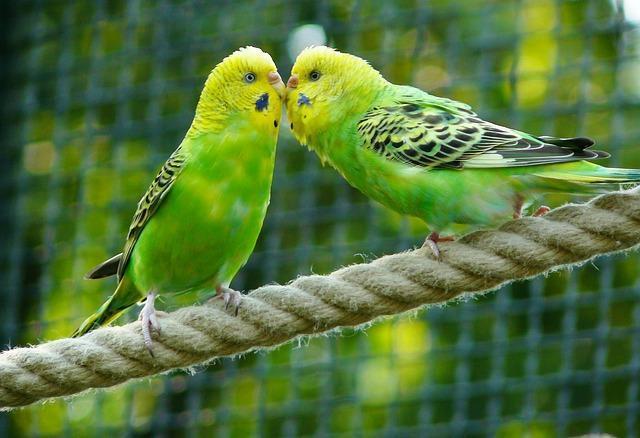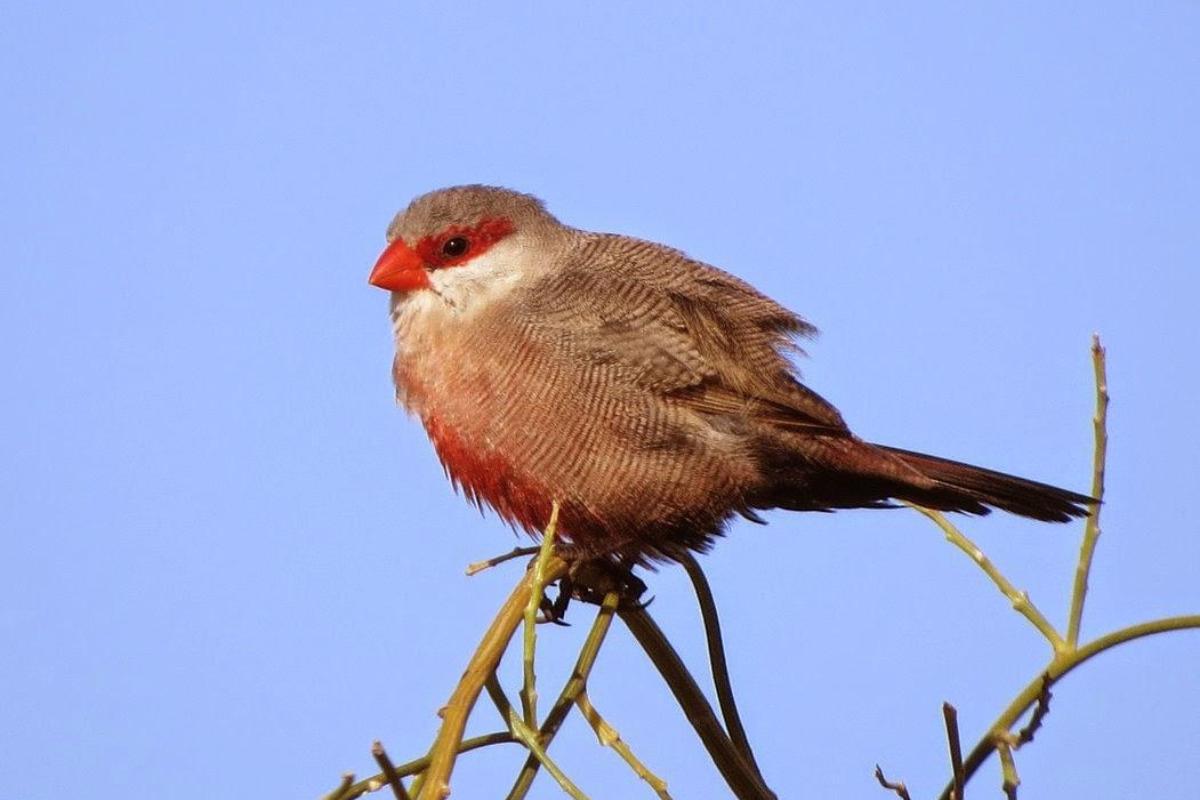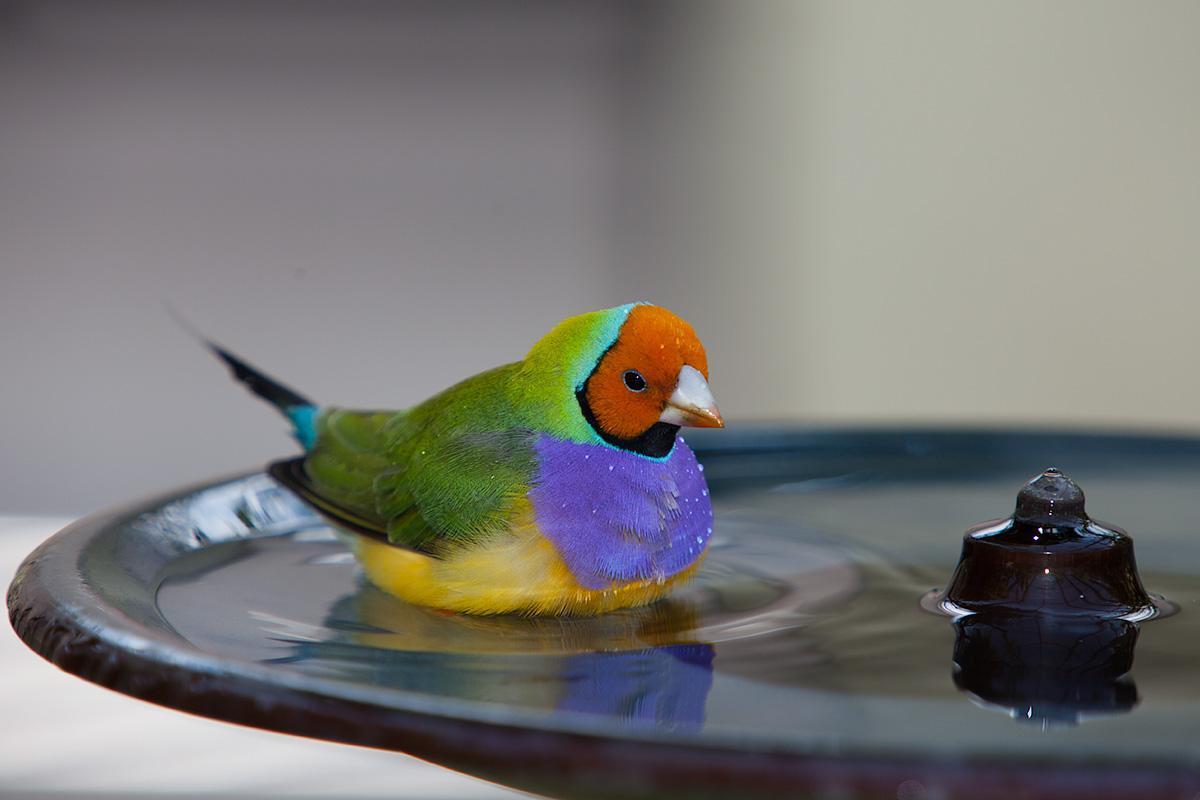What Is Seed Predation in Birds? - Granivorous Birds


Animals are classified according to different criteria, but one of the most common categorizations is their diet. Since few birds pose a direct threat to us humans, it can be easy to forget there are carnivorous birds who will eat other animals. Some will even eat small mammals in the right circumstances. For others, there are fruits and vegetables which can sustain them throughout a given day. You may have heard of seed predators or granivores, but maybe you are unsure how these terms relate to a bird's diet.
In this AnimalWised article, we ask what is seed predation in birds? We find out how birds are able to follow this diet, as well as provide examples of granivorous birds in nature.
- What is seed predation in birds?
- Zebra finch
- European goldfinch
- Sparrow
- Crossbill
- Canary
- Lovebird
- Budgerigar
- Society finch
- Common waxbill
- Gouldian finch
What is seed predation in birds?
If you have ever put out a birdfeeder in your garden, you will likely have filled it with a food mix that small birds enjoy. You can even buy these mixes in pet stores, a feed appropriately called birdseed. This is because it is often made of mostly or even exclusively seeds.
In its most basic sense, seed predation is the behavior of finding and consuming seeds and grains to survive. It is a trait also known as granivory. The animals which carry out this behavior are known as seed predators or granivores. Although some animals may eat a small amount of seeds in their diet, they will not be considered seed predators. Only animals which have seeds and grains as either the main or exclusive diet will be considered seed predators.
There are two main types of seed predation:
Pre-dispersal seed predation
The way in which granivores eat seeds is important. With pre-dispersal seed predation, the animal will take the seed directly from the plant. They will often take the seed from a fruit of the plant. Birds and other seed predators are often specially adapted to be able to do so. For example, some birds will have a beak which is shaped in such a way that it can more easily remove seeds from certain plants.
Post-dispersal seed predation
This is a type of granivory which occurs when the seeds have already fallen from the plant. Many plants will drop their seeds for dispersal in the soil underneath, but opportunistic seed predators may swoop in and take them when they are still on the ground. This is known as feeding on the ‘seed rain’, i.e. seeds that remain on the topsoil. Some birds will dig into the ground and find seeds from the ‘seed bank’, i.e. seeds already implanted under the soil.
When we use the word predator, we may think of lions, bears or other carnivorous animals. But a predator is an organism which feeds on other organisms, which includes seeds. The differences are the nutrients each the predators need to survive, nutrients which are derived from different sources.
It can be helpful to think of seed predators as such because their seeds often put up a fight. While seeds may be considered inanimate objects, they can offer various forms of protection. Some may have a fibrous husk which makes it more difficult for the predator to reach the seed. Others can even secrete mucilage which allows soil to stick to them and become more hidden.
Birds are not the only type of granivorous animal. Many mammals and even some invertebrates will also have seeds as the main part of their diet. However, birds are often particularly well adapted to eating seeds since they have claws to hold them and sharp beaks to break them open. We will see some examples of seed predation in birds in the sections below.
Zebra finch
The zebra finch (Taeniopygia guttata) is a small and sweet-looking bird that lives in large communities. Although they are originally from the forests and grasslands of Australia, zebra finches can be found all around the world as they are very popular as pets.
Indeed, zebra finches are a type of granivorous bird as they mainly feed on seeds, but they also incorporate fresh vegetables into their diet. They do so to achieve the right levels of nutrition. If you keep zebra finches, you may be interested in our articles on the diet of the zebra finch and the fruits and vegetables zebra frinches can eat.

European goldfinch
Another bird known for seed predation is the European goldfinch (Carduelis carduelis), a bird noted for its red face and brown and yellow plumage. It is a wild bird that everyone should see and hear at least once in their lives, as it is famous for its singing abilities. One of the most characteristic features of the European goldfinch is the thin black line that stands out on the back of their wings.
The European goldfinch is one of the most prized songbirds. For this reason, it is one of the birds most affected by bird poaching and inhumane breeding. This is why it is a protected bird in most countries and its capture from the wild has severe consequences.
This beautiful bird lives not only in Europe, but also western Asia and North Africa. Goldfinches are granivorous birds, as they eat mostly seeds from thistles (which give them their scientific name), teasles, and niger seed as well as insects. They live in flocks, in which you can easily distinguish goldfinch males from females.
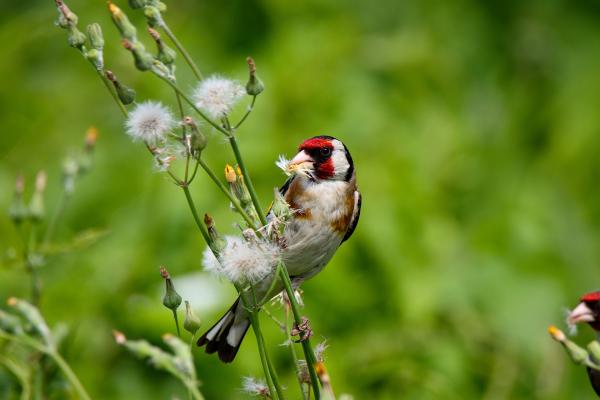
Sparrow
The sparrow is not a species, but a family of birds called Passeridae. As with the finches discussed above, sparrows are sexually dimorphic. This means males and females have variations in their plumage that make them different and easily distinguishable. They are also mainly seed predators, i.e. granivorous birds.
New world sparrows are another bird known for seed predation, but they are actually more similar to finches and are part of the family Passerellidae. House sparrows (Passer domesticus) are native to Eurasia, but they have spread almost all over the world as they adapt easily to urban environments. European tree sparrows (Passer montanus), also live in Eurasia, often living comfortably in cities.
Sparrows tend to live in flocks, which can also include birds from other species like finches and canaries. Besides seeds, they also eat insects and other foods they can scavenge from human settlements.
The picture below shows a European tree sparrow:
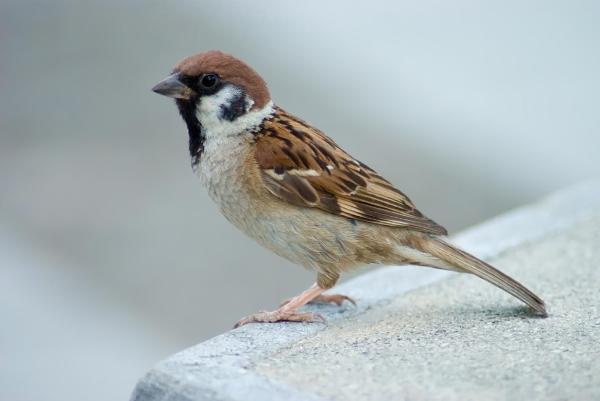
Crossbill
Of all seed-eating birds, the crossbill genus (Loxia) is one of the most unique and interesting. While crossbills are within the family of finches, they are instantly recognizable as their beak has a peculiar cross shape, the reason for their given name.
This variation in its anatomy is an important seed predation adaptaion as it allows the crossbill to remove the seeds from hard pine cones. Crossbills are capable of anything to get the seeds to eat. They can even extract the seeds from apples.
The crossbill is slightly larger than the sparrow, with the difference between the sexes seen in their color. Adult males have red or orange plumage while females are olive green or yellow. They can mostly be found in America and Europe.

Canary
The Atlantic canary (Serinus canaria) is another bird known worldwide for being both a granivorous animal and, in its domesticated variant, an excellent pet. Canaries are intelligent and sociable birds. They enjoy singing in the morning and brightening any bird lovers day.
Atlantic canaries in the wild are not as common as other birds. They are native to the Canary Islands and other archipelagos in the Atlantic Ocean, but they have been introduced to other places like Hawaii and Puerto Rico. Wild canaries are more toned down and subtle in color, with brown and yellow plumage.
Canaries feed mostly on seeds from grass, weeds and fruits, but also insects. If you keep canaries, you might be interested in our article on what is the best diet for a canary.

Lovebird
Lovebirds are a genus of birds with the scientific name Agapornis. They are native to Africa, but they can be found all around the world as they are popular and cherished pets. Lovebirds are one of the smallest types of parrot.
There are a nine species of lovebirds, each with particular colors and markings on the plumage. However, they all have one thing in common: they love living with a partner. Lovebirds are intelligent birds and they can easily learn to do certain things in exchange for food and attention. They are also very sociable.
In captivity, their diet must include seeds and grains like millet, oats, safflower and buckwheat. They also need nuts, fresh vegetables and fruits. They can also eat flowers.

Budgerigar
We couldn't leave the budgerigar (Melopsittacus undulatus) off this list of birds known for seed predation as it is the most popular pet bird in the world. Just like lovebirds, budgies - and most other parakeets - are social birds that love to live in pairs and enjoy attention and treats from their family.
Budgerigars are chatty and friendly, and they present in a variety of colors and breeds. If you're interested in keeping these beautiful birds, we recommend our article on caring for a parakeet.
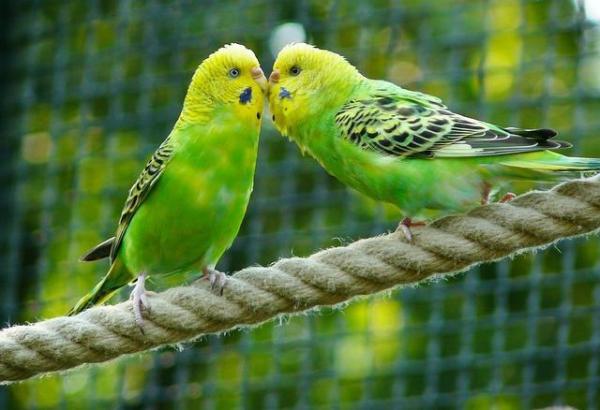
Society finch
Also known as Bengali finches, the Society finch (Lonchura striata domestica) is small in size. This beloved pet bird is purely domestic and isn't found in the wild. It descends from the Asiatic white-rumped munia, but its colors are darker and it is more docile.
Society finches can coexist beautifully with other birds such as zebra finches because of their quiet and subdued character. In fact, a pair of male society finches make good foster parents for eggs and chicks from other species. The society finch is another granivorous bird, mostly eating millet and canary seed.
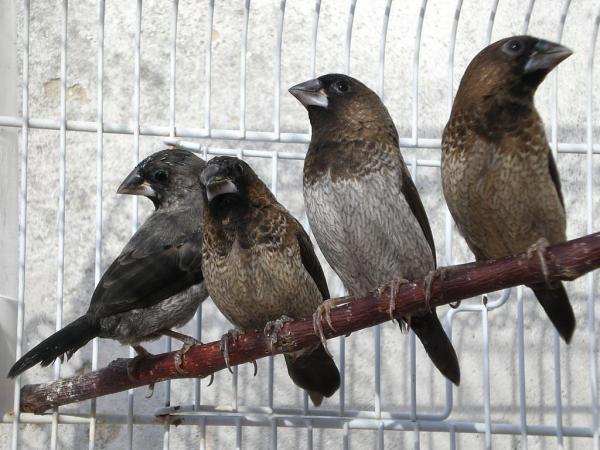
Common waxbill
The common or St Helena waxbill (Estrilda astrild) gets its name from its physical appearance, because its tiny, pointed beak is the same bright coral color as the wax that was used to seal letters. They are very beautiful and valued birds, notable for the beautiful coloring around their eyes that reminds us of fashionable eye shadow.
The common waxbill is a seed predator; this granivorous bird feeds mostly on grass seeds, but during the breeding season they may eat insects to boost their protein intake. It lives in large communities of birds in much of sub-Saharan Africa, but it has spread to Southern Europe, the east of South America and even some Pacific islands.
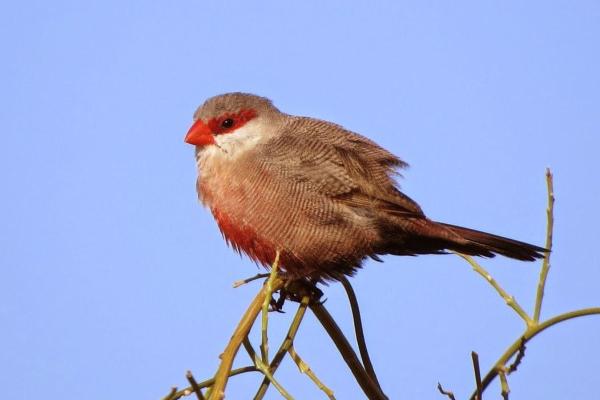
Gouldian finch
We finish our examples of seed predation in birds with the Gouldian, Lady Gouldian or rainbow finch (Erythrura gouldiae), a rarer kind of bird native to Australia. The Gouldian finch is difficult to keep in captivity. Their breeding is expensive and they take a long time to reach adulthood, which makes them very delicate specimens. The population in the wild is declining, and they have near threatened species status.
Gouldian finches are a very beautiful and coveted species because of their striking colors, but the truth is that they require owners with love, passion and ability to care for them properly. This requires expertise and aptitude. Like the other finches, they are granivorous birds, mostly feeding on sorghum and grass seeds.
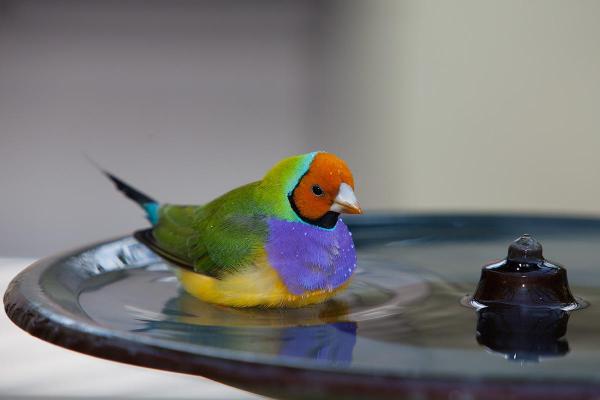
If you want to read similar articles to What Is Seed Predation in Birds? - Granivorous Birds, we recommend you visit our Healthy diets category.

